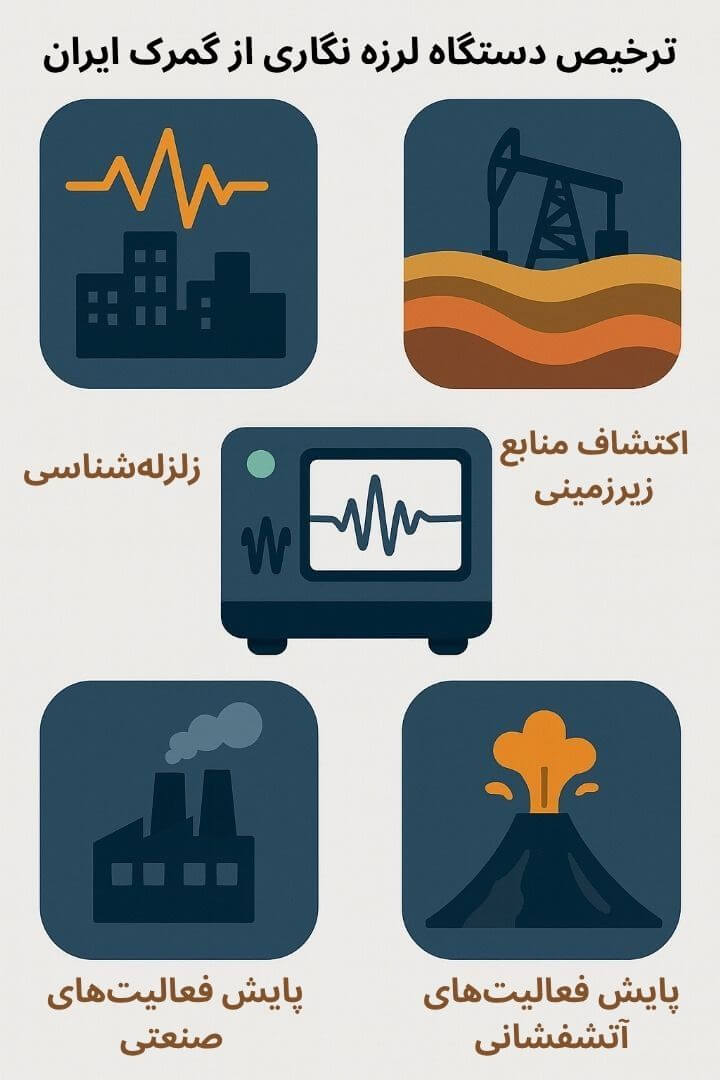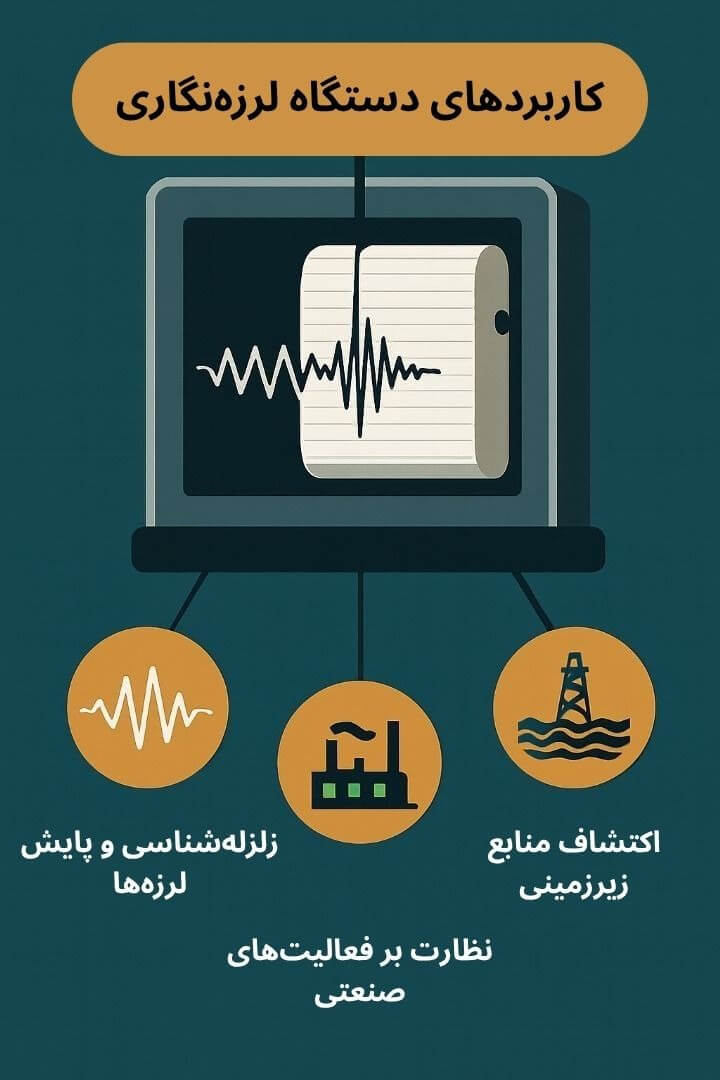Customs clearance of seismograph device in Iran (HS Code + documents and permits)

For estimating the time and cost of seismograph device clearance, contact the experts at Saba Tarkhis.
Instant free consultation1) Customs tariff code (HS Code) of seismograph device
| Goods/subgroup | Short description | HS Code (example) |
|---|---|---|
| Seismograph/Seismometer systems | Equipment for recording/analyzing seismic waves; research/exploration/monitoring | 9022.19.00 (per your text; final determination depends on technical specs) |
Exact subheading depends on sensor type, data acquisition/processing modules, application (geology/industrial/laboratory), accessories, and technical specifications.
2) Applications of seismograph devices
Seismology
Exploration of underground resources
Monitoring industrial activities
Monitoring volcanic activities
3) Key points in clearing seismograph devices
4) Special conditions for importing and exporting seismograph devices
Import and export volume of seismograph devices
Global circulation and trade of seismograph devices
5) Required documents for clearing seismograph devices
-
1. Proforma Invoice
The proforma invoice includes precise specifications of the seismographs, quantity, unit price, total price, payment terms, and other purchase-related information. This document is provided by the seller to the buyer and serves as a pro forma or preliminary purchase contract. -
2. Commercial Invoice
The commercial or final invoice is issued by the seller after the transaction and includes complete information such as product details, quantity, price, and payment terms. This document is necessary for calculating customs duties and charges. -
3. Bill of Lading
The Bill of Lading is issued by the carrier and includes shipment specifications, transport conditions, and consignor/consignee information. It is also recognized as a document of title to the goods. -
4. Packing List
The packing list contains package details of the shipment, providing exact information such as the number of packages, type of packaging, weight of each package, and their contents. It is used to match the information in the B/L and invoice. -
5. Certificate of Origin
Issued by the chamber of commerce of the country of origin, it confirms the originating country of the seismographs. This document is essential for preferential tariffs and compliance with trade regulations. -
6. Necessary permits from competent authorities
Depending on the application and type of seismographs, permits may be required from authorities such as:
Ministry of Science, Research and Technology: for devices used in scientific and academic research.
Geological Survey and Mineral Exploration Organization: for equipment related to subsurface exploration and geology.
Department of Environment: if the devices are related to environmental monitoring. -
7. Certificate of Conformity
Confirms that the imported devices comply with national and international standards. This document is usually issued by accredited domestic or international bodies and is essential for ensuring device quality and safety. -
8. Pre-shipment Inspection Certificate
In some cases, a pre-shipment inspection certificate is issued by international inspection companies to confirm the correctness and integrity of the devices before shipment to the destination country. This document can be a guarantee for the buyer and facilitate clearance. -
9. Customs Declaration
The customs declaration is a document in which detailed information about the imported devices, customs value, tariff code, and other clearance-related details are declared. It must be completed correctly and submitted to customs along with other documents. -
10. Insurance Certificate
Issued by the insurance company, it guarantees coverage of possible damages during transportation. This document is very important for compensating potential losses during transport. -
11. Commercial Card
A commercial card is a permit issued by the chamber of commerce to traders and trading companies, allowing them to import and export goods. Having this card is mandatory for customs operations. -
12. Import permit (if required)
In certain cases, it is necessary to obtain an import permit from governmental organizations such as the Ministry of Industry, Mine and Trade or other relevant bodies.
Submitting these documents completely and without defects to customs facilitates the clearance of seismographs and prevents potential problems or delays. Collaboration with experienced brokers familiar with customs procedures can significantly reduce clearance time and costs.
Need precise HS Code determination, permits, and document preparation? Our team manages the case end-to-end.
Submit a pro forma invoice request
Frequently asked questions
What is the HS Code of a seismograph device?
According to your text, the common subheading 9022.19.00 is mentioned; final determination depends on device type, sensors, auxiliary modules, and technical documentation.
Which permits are required for import?
As applicable, from the Ministry of Science, the Geological Survey and Mineral Exploration Organization, and in some cases the Department of Environment, along with technical and calibration documents.
What are the transport and storage conditions for seismographs?
Temperature and humidity control, prevention of impact and unauthorized vibrations, protective packaging, and transportation under controlled conditions are essential to preserve measurement accuracy.
Specialized customs clearance services by Saba Brokerage
Saba Brokerage, by providing comprehensive and specialized services in clearing seismograph devices, plays an important role in facilitating the import of this equipment into the country. Some of the special services offered by this brokerage include:
Specialized consultation on tariff code selection and permits: The expert team, fully aware of customs laws and regulations, helps you accurately select the appropriate tariff code and prepare the required documents. This consultation also includes guidance in obtaining necessary permits from relevant bodies.
Continuous and fast clearance follow-up: By leveraging extensive connections with competent bodies, the clearance process is pursued rapidly and efficiently. The team, with high accuracy and speed, prevents any delays and ensures your devices are cleared in the shortest possible time.
Special packaging and transportation: Given the high sensitivity of seismographs, special packaging and transportation services are provided. These include protective packaging and transportation under controlled conditions to prevent device damage.
Accurate evaluation and proper valuation: By providing precise evaluation and correct valuation of imported devices, it is ensured that customs costs and duties are calculated correctly and that extra costs are avoided.
24-hour support and post-clearance services: The support team is ready to respond to clients 24 hours a day. These services also include post-clearance technical support and providing necessary solutions to resolve any potential issues in the future.
Choosing this brokerage for clearing seismographs, with guaranteed accuracy at every stage, gives you peace of mind and prevents problems arising from incomplete documentation or non-compliance with customs regulations. With the team’s extensive experience and expertise, importing sensitive and advanced equipment into the country will be done at the lowest cost and in the shortest possible time.
.png)
